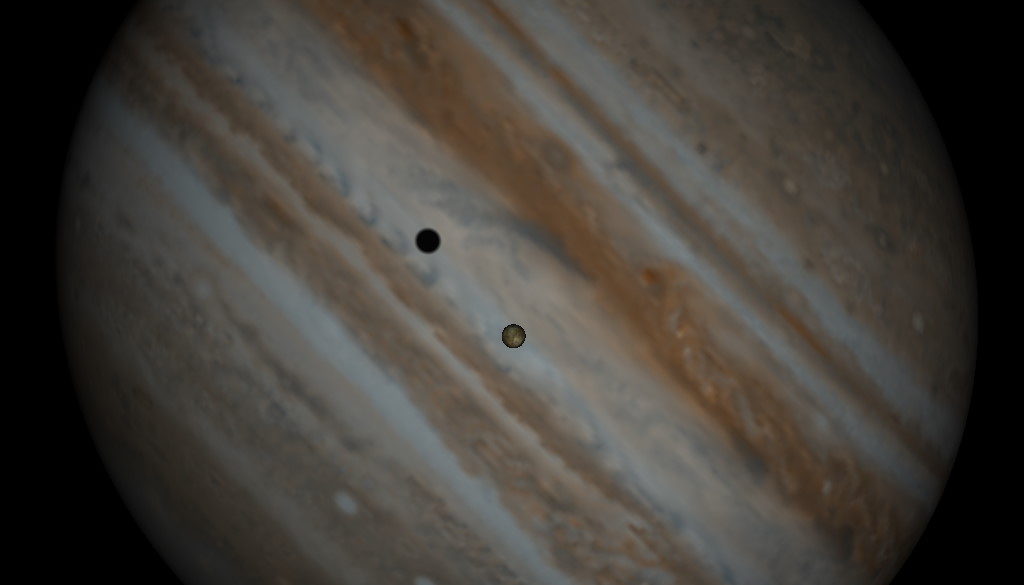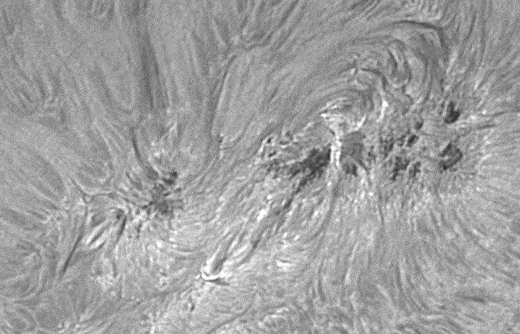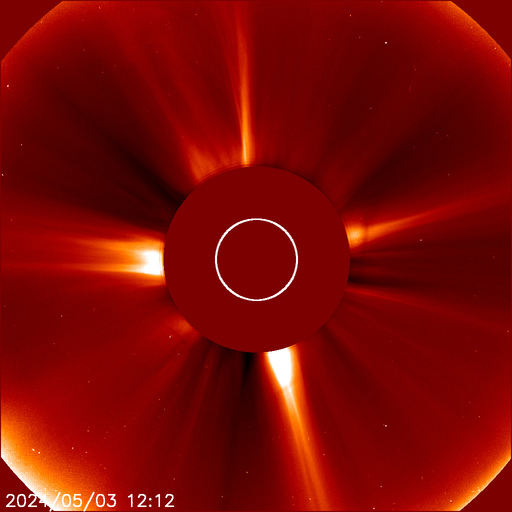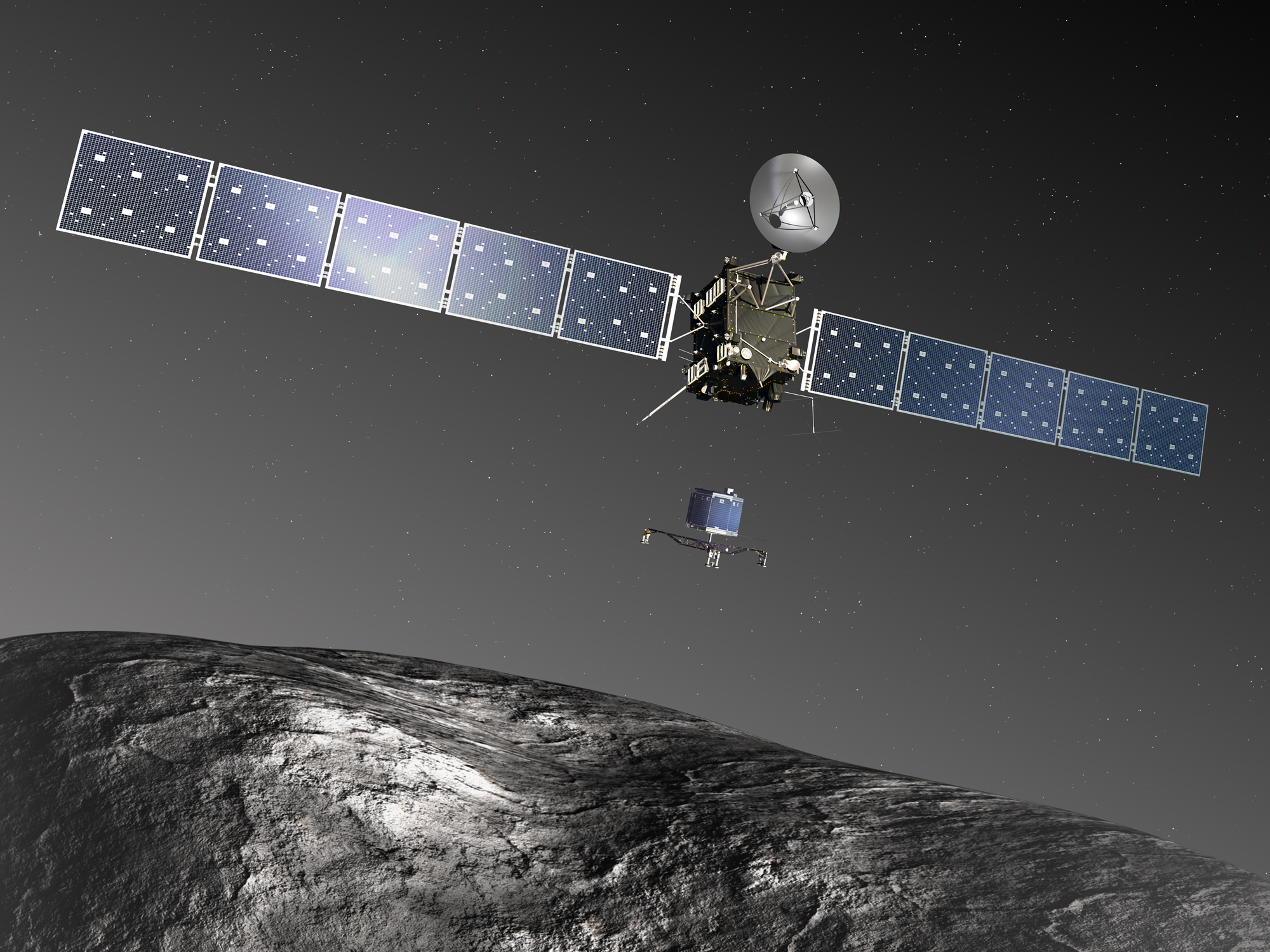Jupiter Moon and Shadow Transit Season
When working on today’s post, I was using Stellarium to create images, and almost as an afterthought I decided to zoom-in on Jupiter and see if I could spot any upcoming shadow transits – I found a LOT of them! The cover image for this week is one I thought was particularly cool – Jupiter’s moon Io and its shadow centered on the Jupiter’s face.
Have a look at my “Solar System” section, I show several different Jupiter moon and shadow transits. For most of these transits, you’ll need to be a night-owl tho – many happen in the wee hours of the morning.

Venus dances with the star Spica all week above the western horizon at dusk; Mercury appears low above the western horizon, getting lower each day.
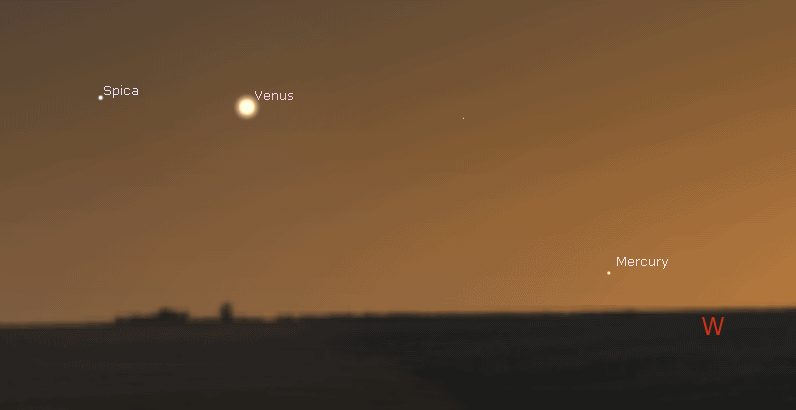
Jupiter and Saturn continue to appear in the southern sky after sunset – they appear the highest near midnight. Note how far apart the two planets are now, after appearing right on top of each other last December.
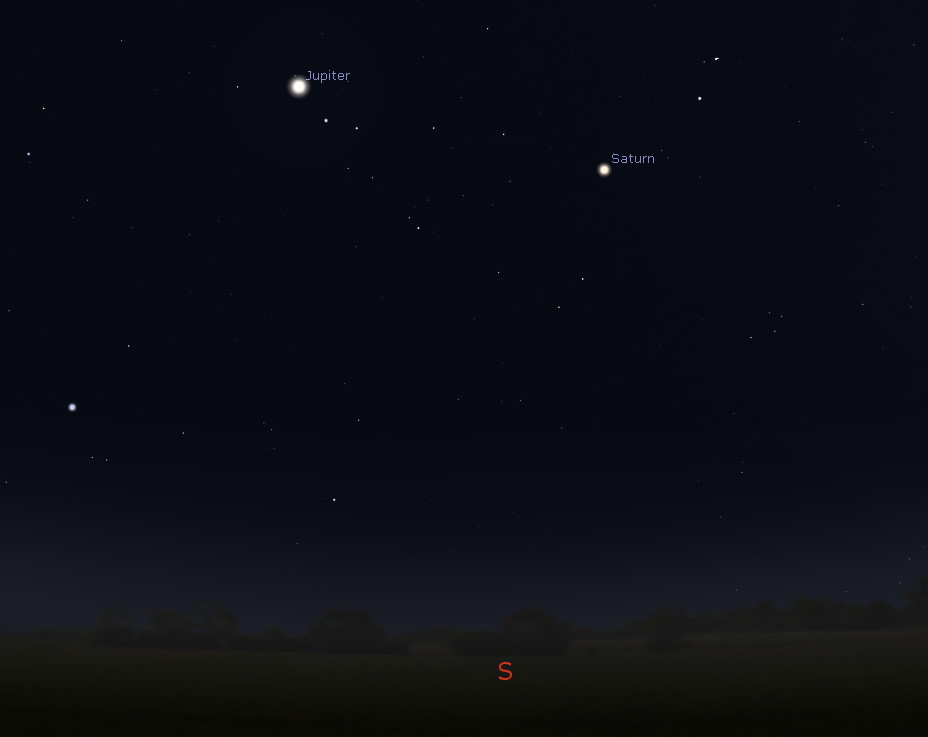
The waning crescent Moon appears near the star Pollux in the eastern predawn sky on September 3rd. This would be an excellent time to look for earthshine on the Moon.
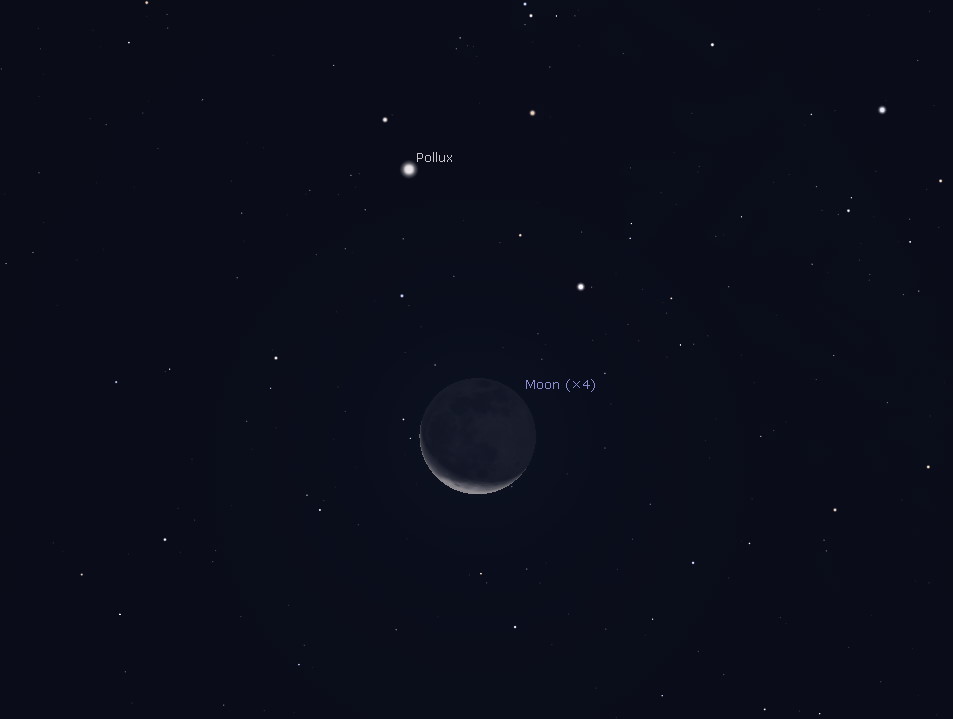

- The Moon is a a Waning Crescent – visible low to the east before sunrise.
- The New Moon occurs on September 6th – the part of the Moon facing us is completely in shadow.

If you click on the Moon image above, or click this link, you will go to NASA’s Moon Phase and Libration, 2021 page – it will show you what the Moon looks like right now. If you click the image on that page, you will download a high-rez TIFF image annotated with the names of prominent features – helpful for logging your lunar observations!
Moon News:

The Sun has two sunspots – one is a monster! SpaceWeather.com says: “AR2860 has a ‘beta-gamma’ magnetic field that harbors energy for strong M-class solar flares.”
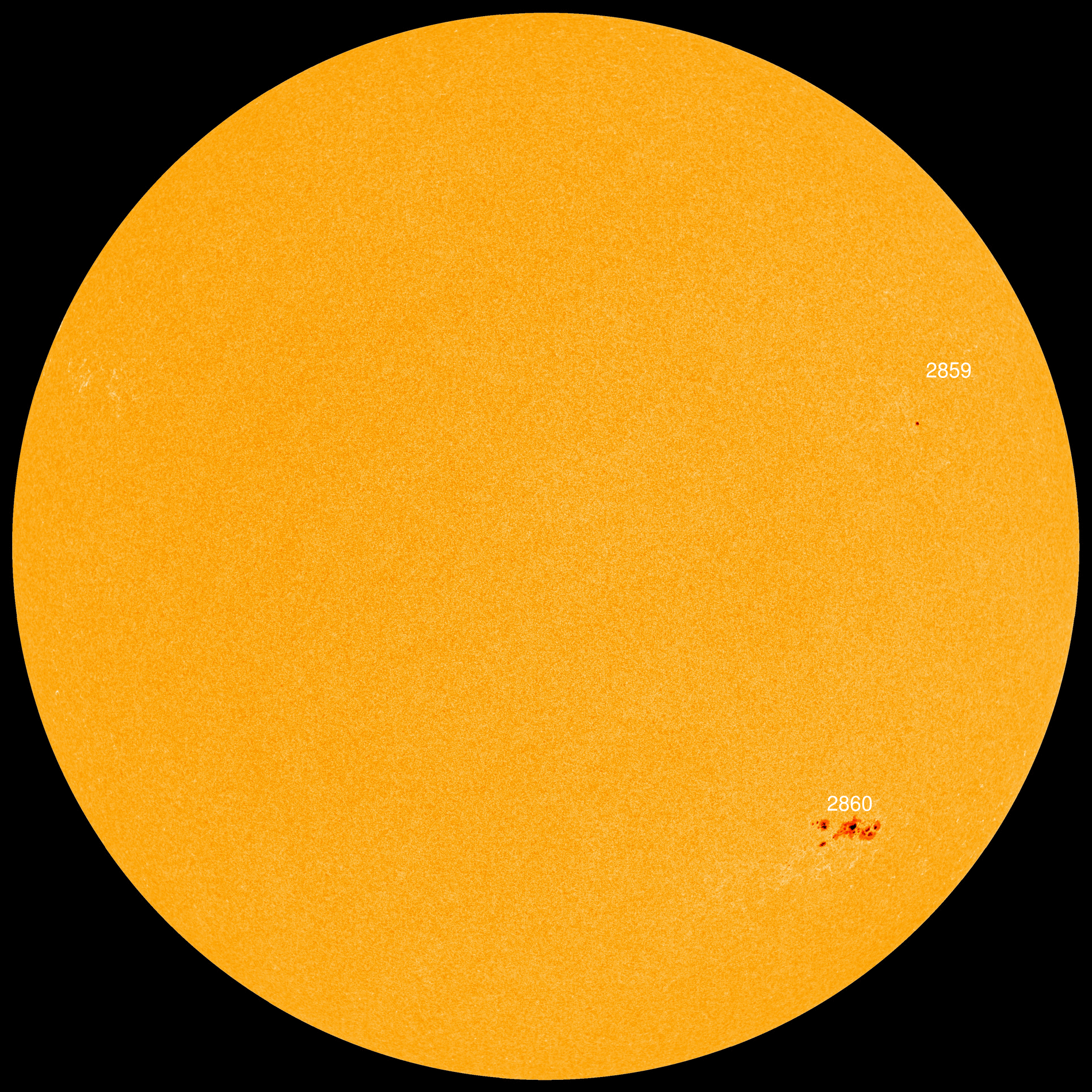
You can view the Sun in near real-time, in multiple frequencies here: SDO-The Sun Now.
You can create your own time-lapse movies of the Sun here: AIA/HMI Browse Data.
You can browse all the SDO images of the Sun from 2010 to the present here: Browse SDO archive.
Amateur Solar Astrophotography
Solar Corona
Solar wind speed is 378.8 km/sec ▲ with a density of 18.1 protons/cm3 ▼ at 1134 UT.
Click here to see a near real-time animation of the corona and solar wind from the Solar & Heliospheric Observatory (SOHO).
Sun News:

- Near-Earth Objects (NEOs) discovered this month: 175, this year: 1735 (+20), all time: 26,574 (+19)
- Potentially hazardous asteroids: 2203 (Updated 2021-08-24)
- Total Minor Planets discovered (NASA): 1,113,527 (updated 2021-08-17)
- Total Minor Planets discovered (MPC): 1,116,816 (+30,161) (updated 2021-08-31)
Upcoming Earth-asteroid encounters:
| Asteroid | Date(UT) | Miss Distance | Velocity (km/s) | Diameter (m) |
| 2021 QC1 | 2021-Sep-01 | 15.2 LD | 12.8 | 95 |
| 2015 SW6 | 2021-Sep-05 | 15.9 LD | 9.9 | 45 |
| 2021 QM1 | 2021-Sep-06 | 7 LD | 21.3 | 53 |
| 2021 QW | 2021-Sep-06 | 14.4 LD | 13 | 89 |
| 2021 QH1 | 2021-Sep-07 | 2.2 LD | 7.8 | 27 |
| 2021 QG | 2021-Sep-09 | 6.2 LD | 5.8 | 18 |
| 2010 RJ53 | 2021-Sep-09 | 9.6 LD | 19.3 | 56 |
| 2020 KR2 | 2021-Sep-10 | 14.2 LD | 5.1 | 17 |
| 2017 SL16 | 2021-Sep-20 | 12.8 LD | 6.1 | 23 |
| 2021 NY1 | 2021-Sep-22 | 3.9 LD | 9.4 | 177 |
| 2019 SF6 | 2021-Sep-26 | 16.4 LD | 8.6 | 20 |
| 1998 SD9 | 2021-Oct-06 | 10.6 LD | 10.8 | 59 |
| 2015 TQ21 | 2021-Oct-07 | 10.7 LD | 20.7 | 12 |
| 2019 SE5 | 2021-Oct-11 | 16.3 LD | 6.6 | 16 |
| 2020 TH6 | 2021-Oct-19 | 7.3 LD | 5.9 | 6 |
| 1996 VB3 | 2021-Oct-20 | 8.8 LD | 15.3 | 135 |
| 2017 SJ20 | 2021-Oct-25 | 18.7 LD | 15.7 | 123 |
| 2019 UW6 | 2021-Oct-26 | 8 LD | 11.1 | 17 |
Asteroid News:

On August 30, 2021, the NASA All Sky Fireball Network reported 22 fireballs!
(21 sporadics, 1 alpha Aurigid)
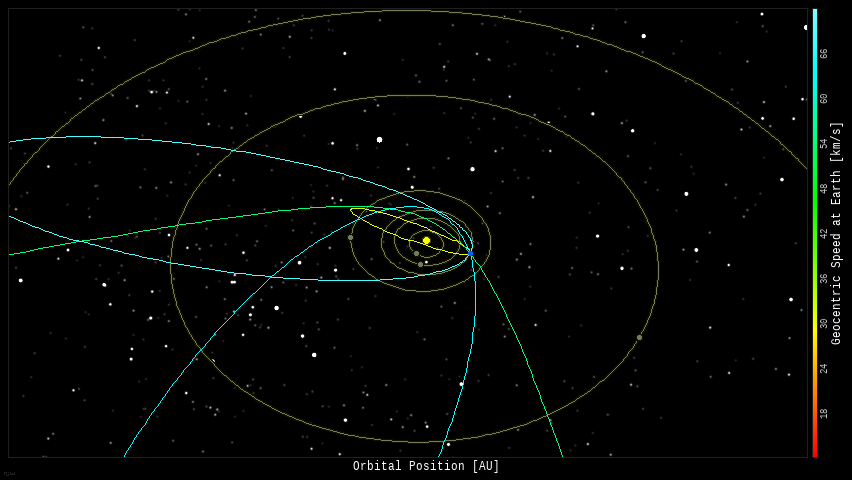
Fireball News:
If you see a bright meteor or a fireball, please REPORT IT to the American Meteor Society and the International Meteor Organization!

Position of the planets & several spacecraft in the inner solar system on August 31st:
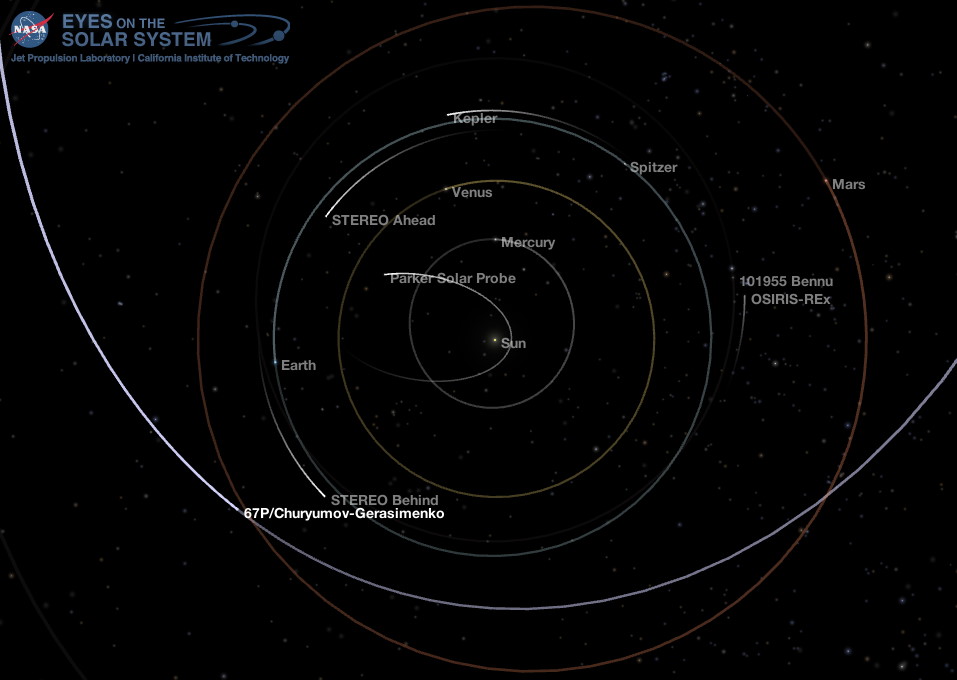
Position of the planets in the middle solar system:
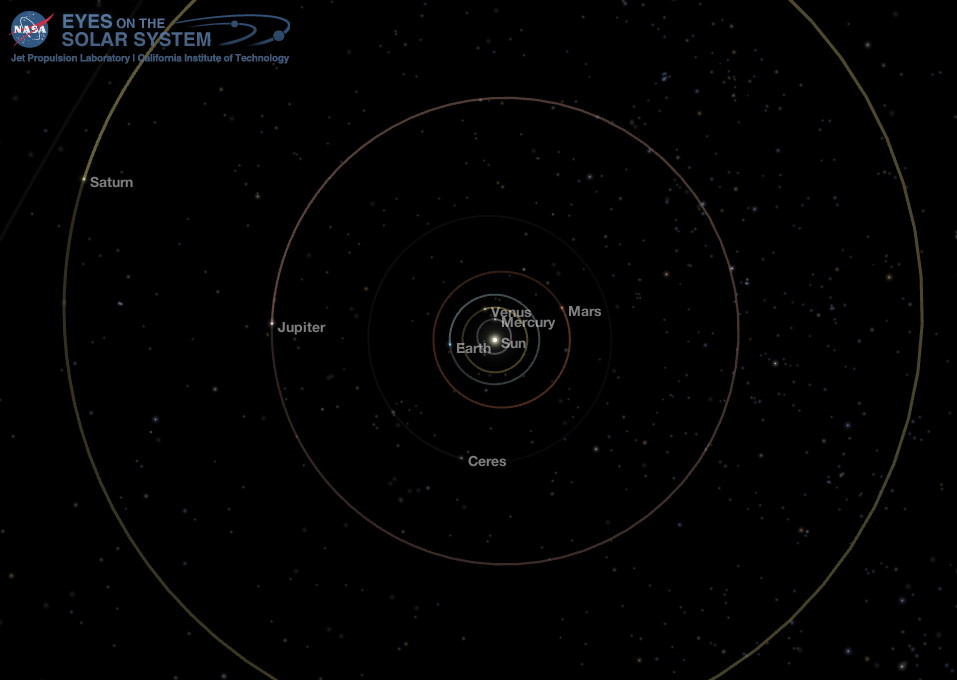
Position of the planets in the outer solar system:
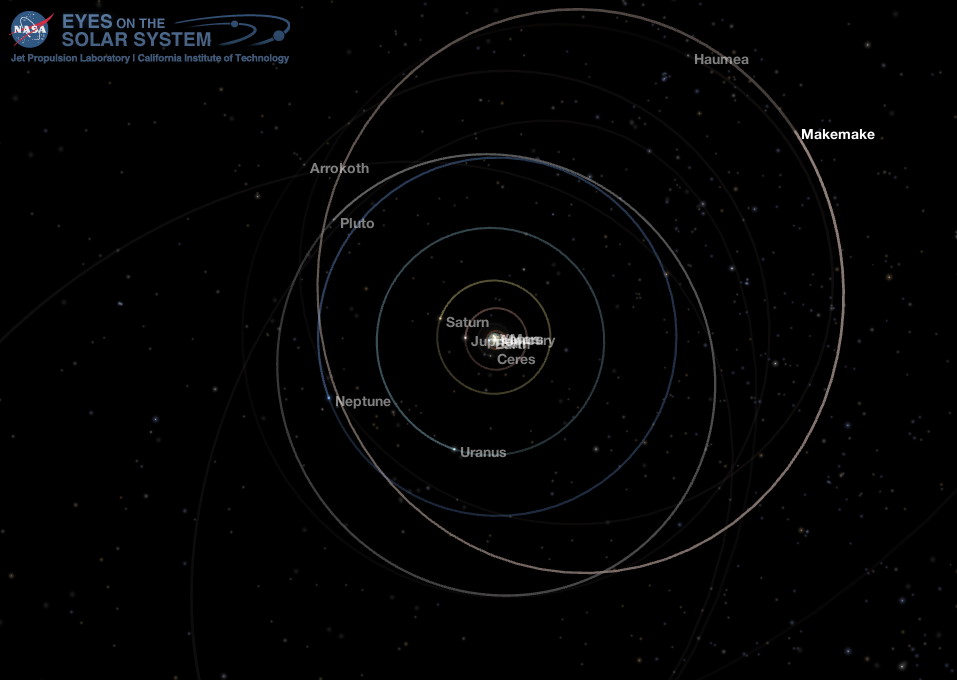
Solar System News: Jupiter Moon and Shadow Transits
-
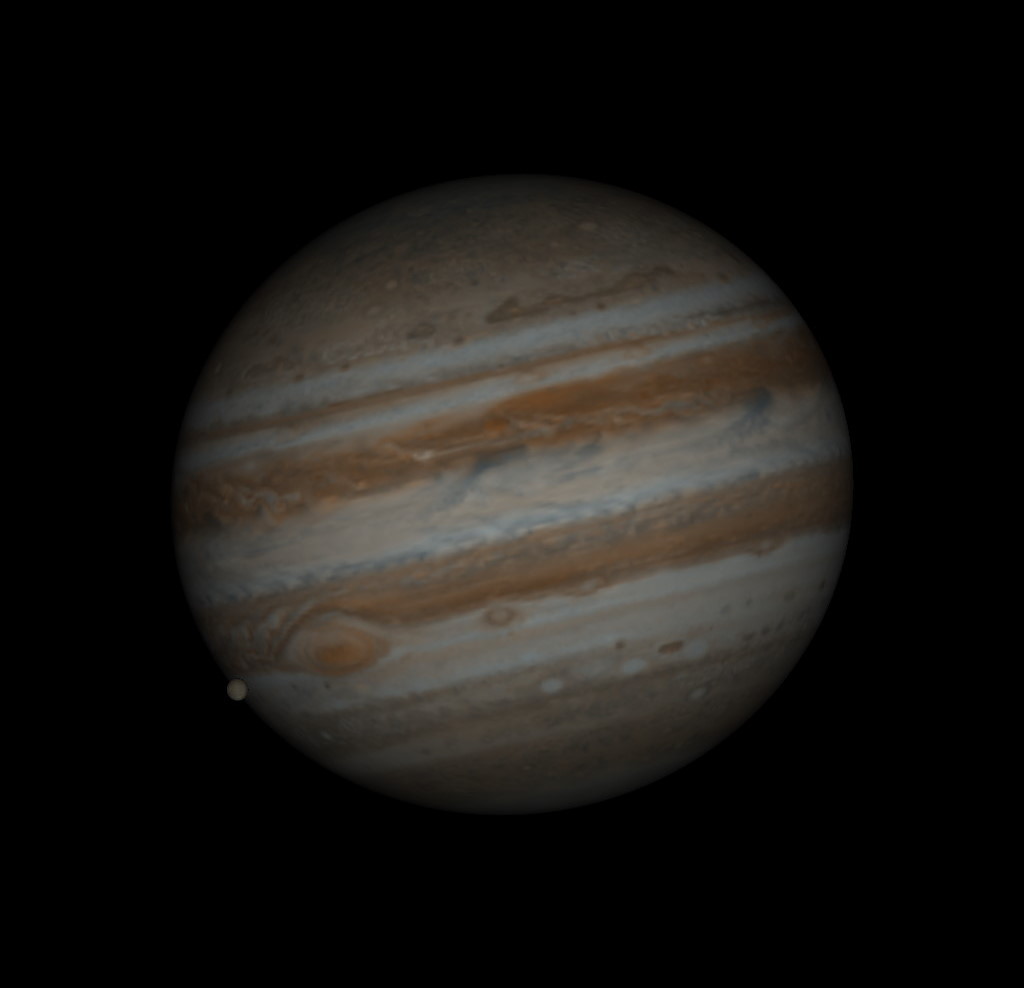
Callisto between first and second contact on August 31, 2021 9:31 PM. Credit: Bob Trembley / Stellarium. -
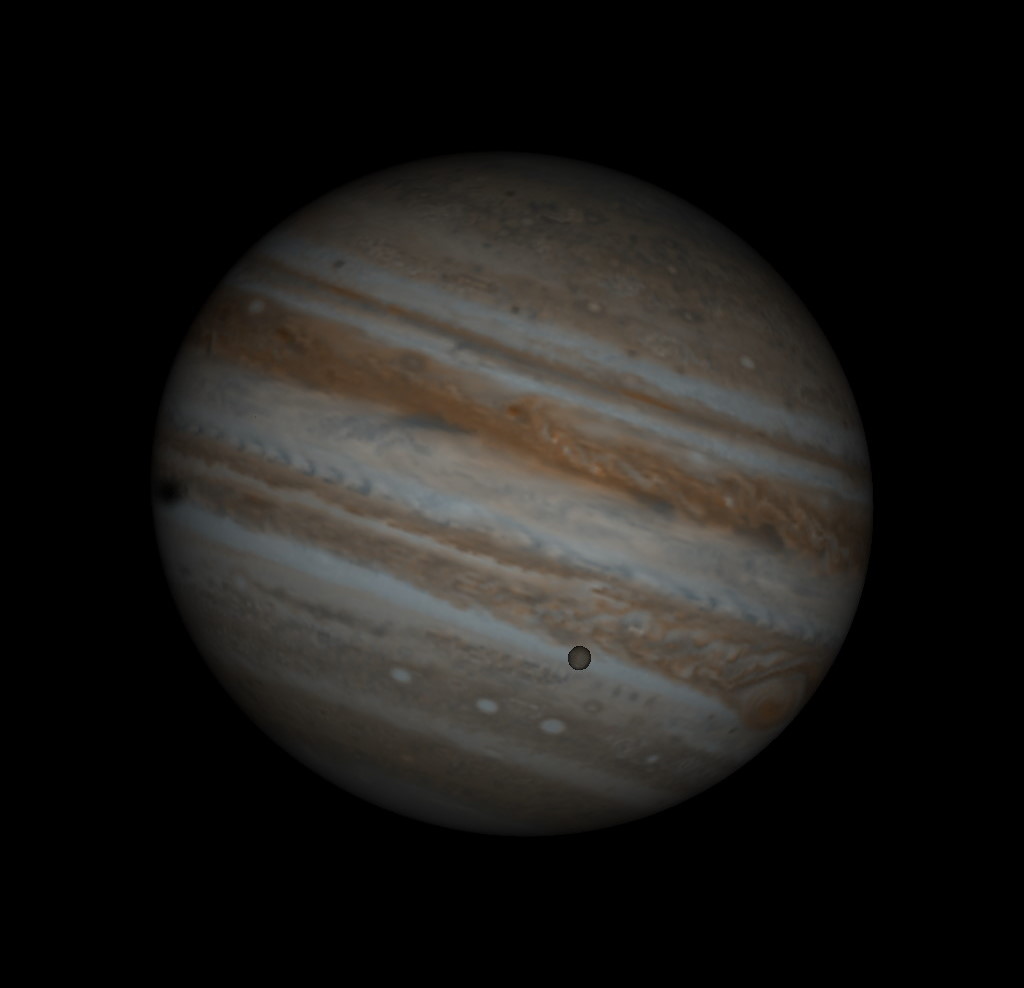
Callisto’s shadow at second contact, with Callisto on Jupiter face on September 1, 2021 12:29 AM. Credit: Bob Trembley / Stellarium. -
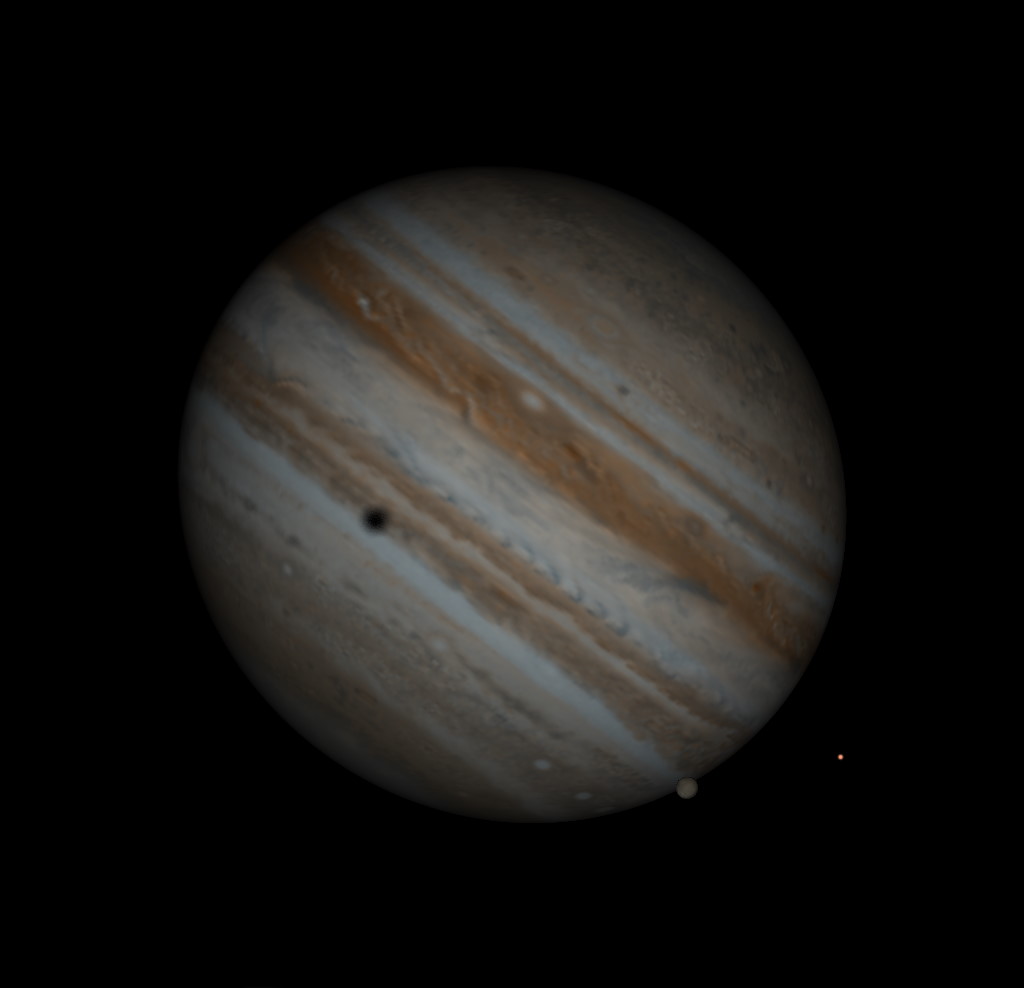
Callisto between third and fourth contact on September 1, 2021 1:57 AM. Credit: Bob Trembley / Stellarium -
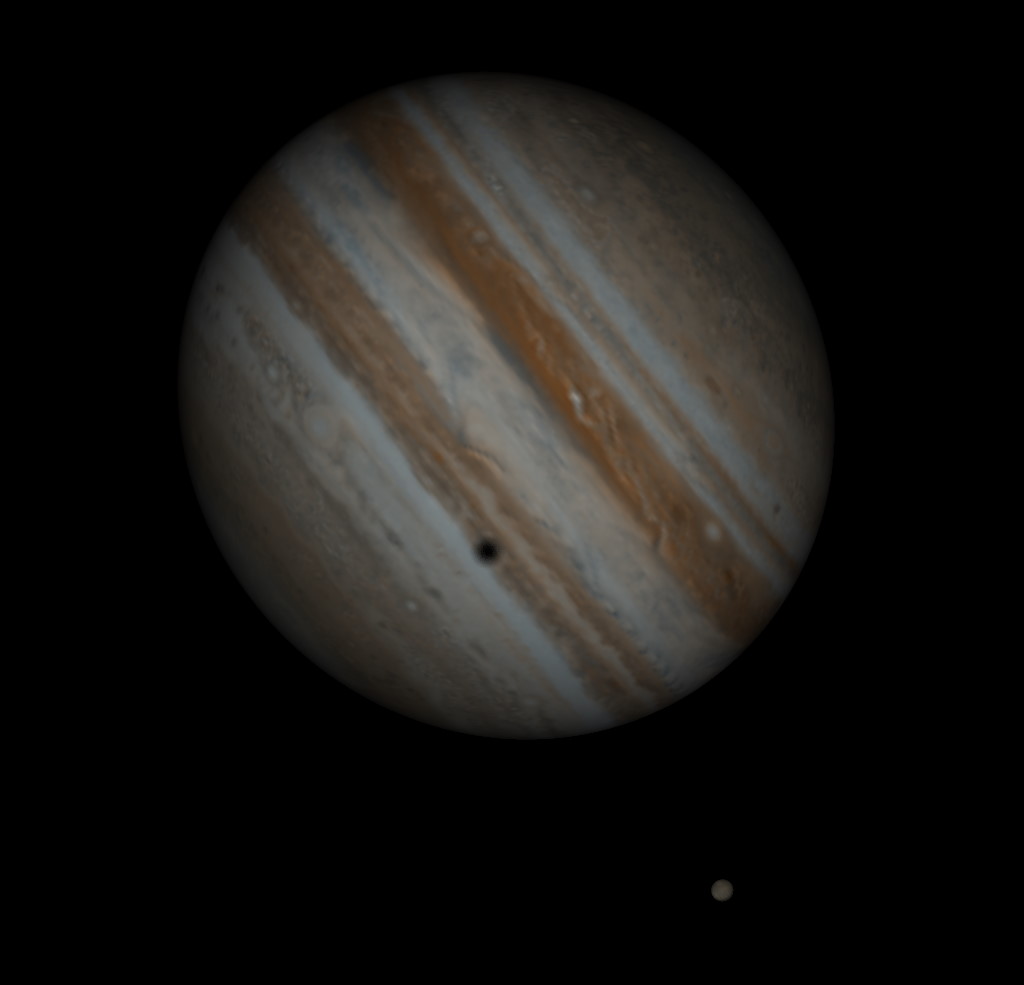
Callisto’s shadow centered on Jupiter on September 1, 2021 2:21 AM. Credit: Bob Trembley / Stellarium -
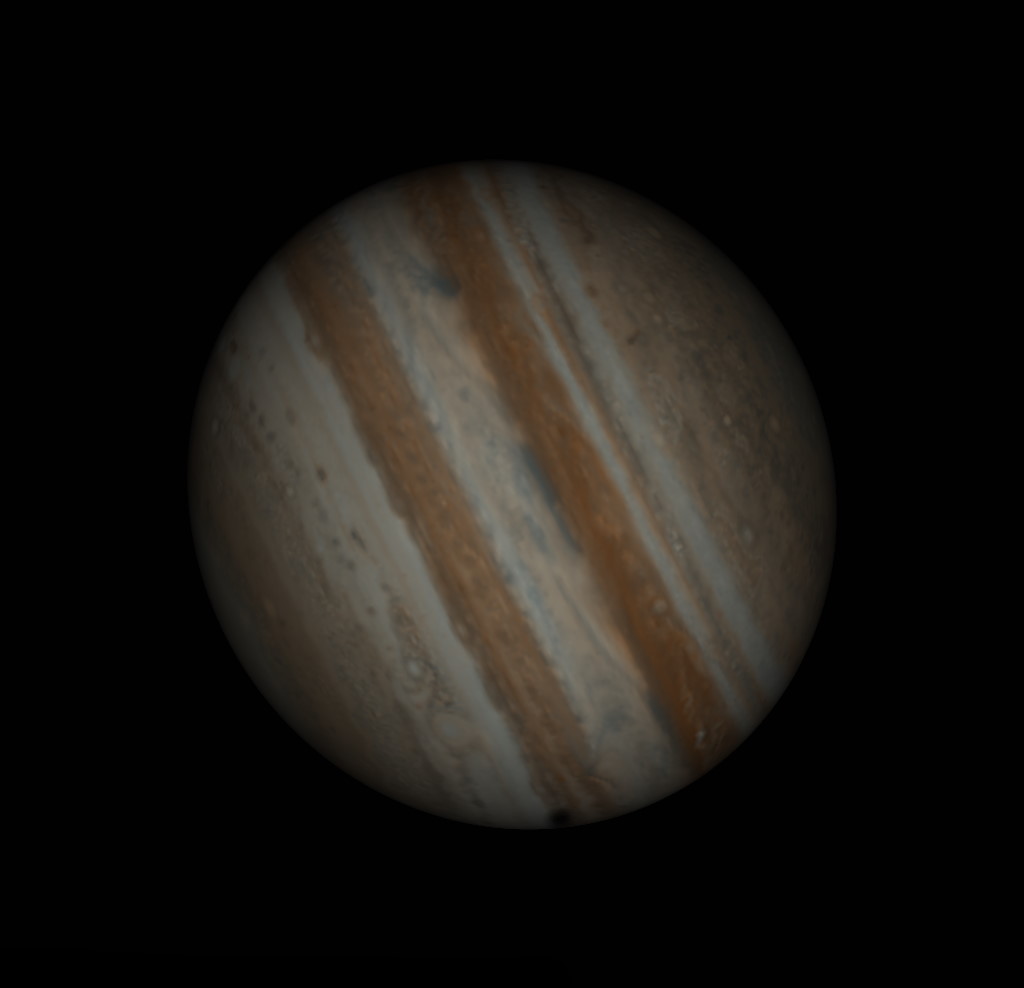
Callisto shadow at third contact on September 1, 2021 4:56 AM. Credit: Bob Trembley / Stellarium. -
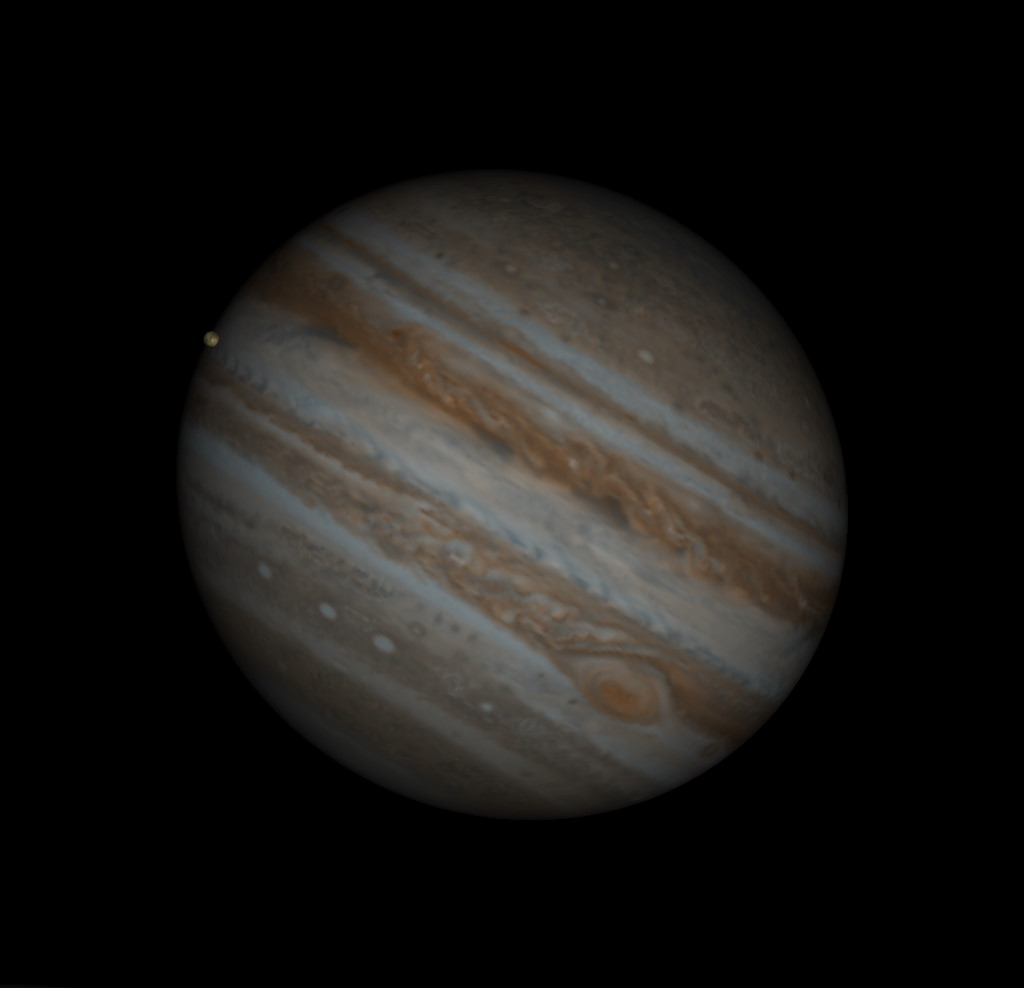
Io between first and second contact on September 3, 2021 1:19 AM. Credit: Bob Trembley / Stellarium. -
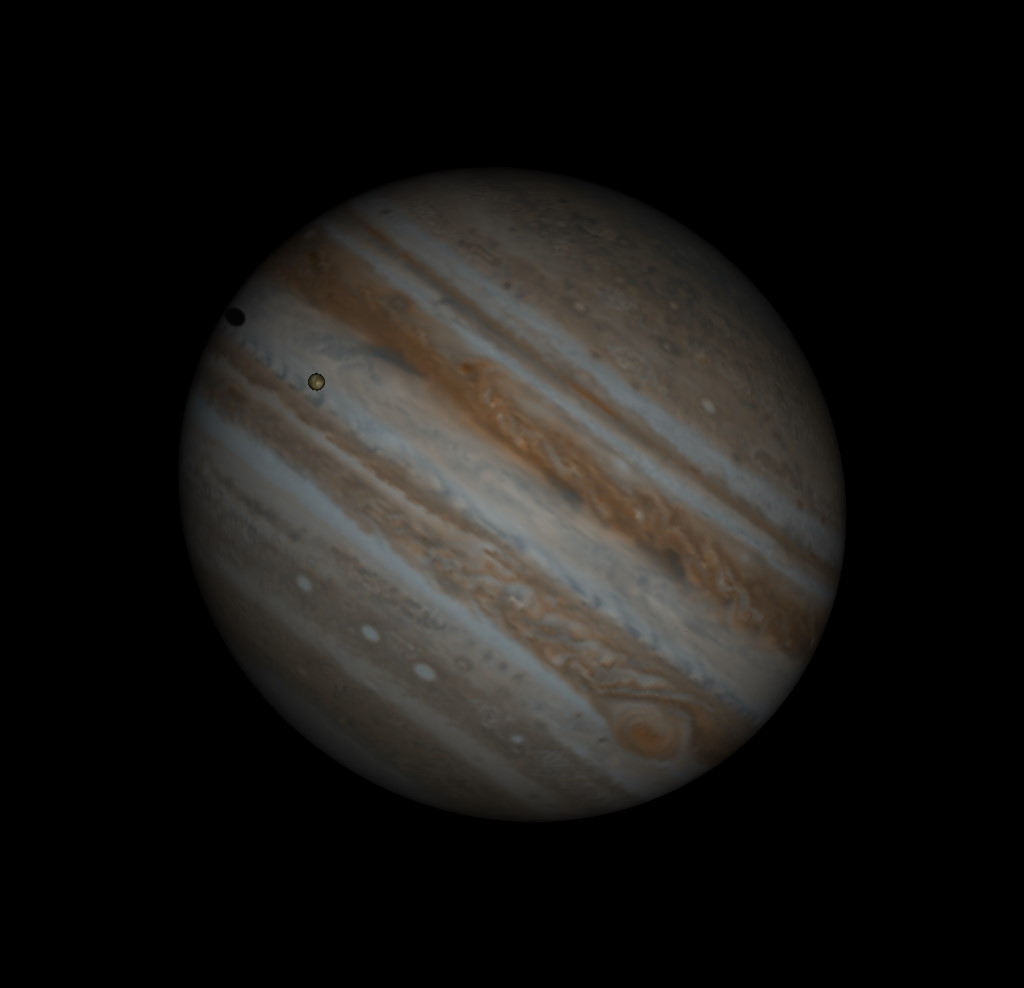
Io’s shadow at second contact on September 3, 2021 1:42 AM. Credit: Bob Trembley / Stellarium. -
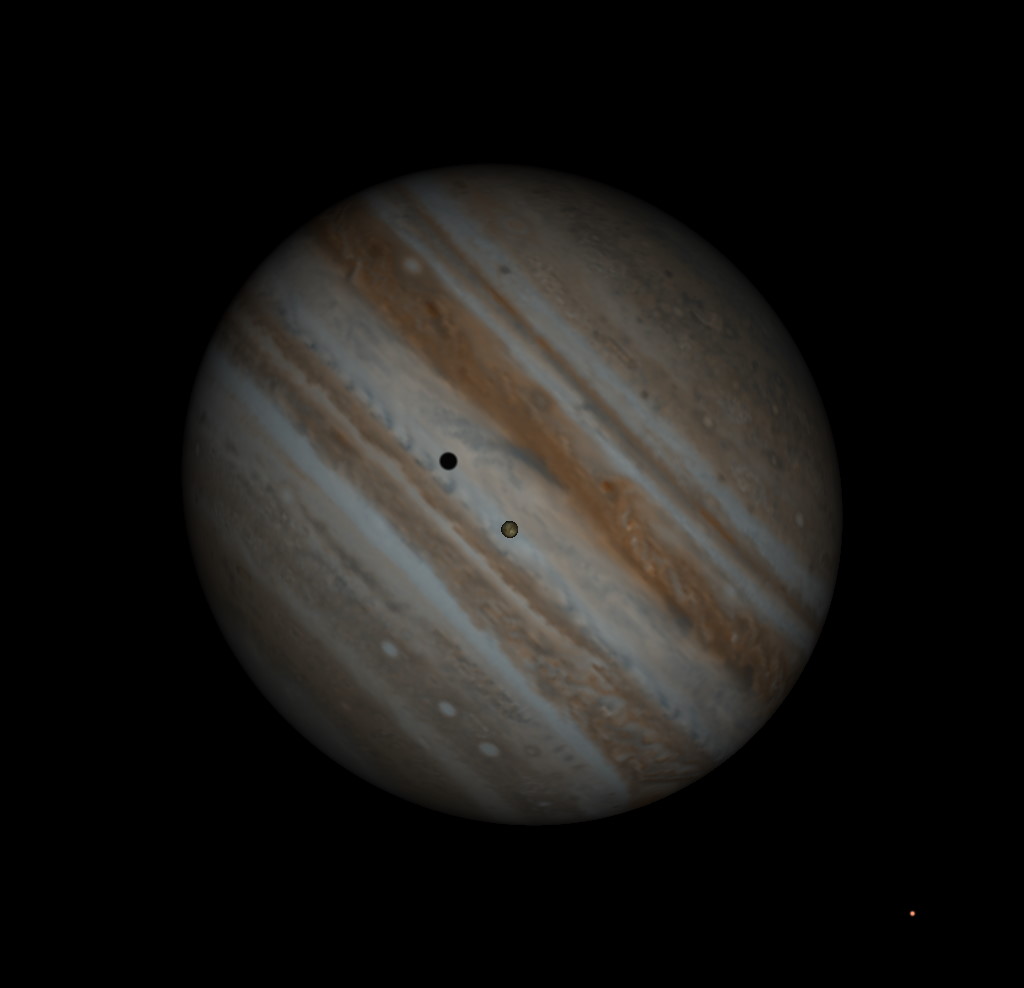
Io and its shadow centered on Jupiter’s face on September 3, 2021 2:32 AM. Credit: Bob Trembley / Stellarium. -
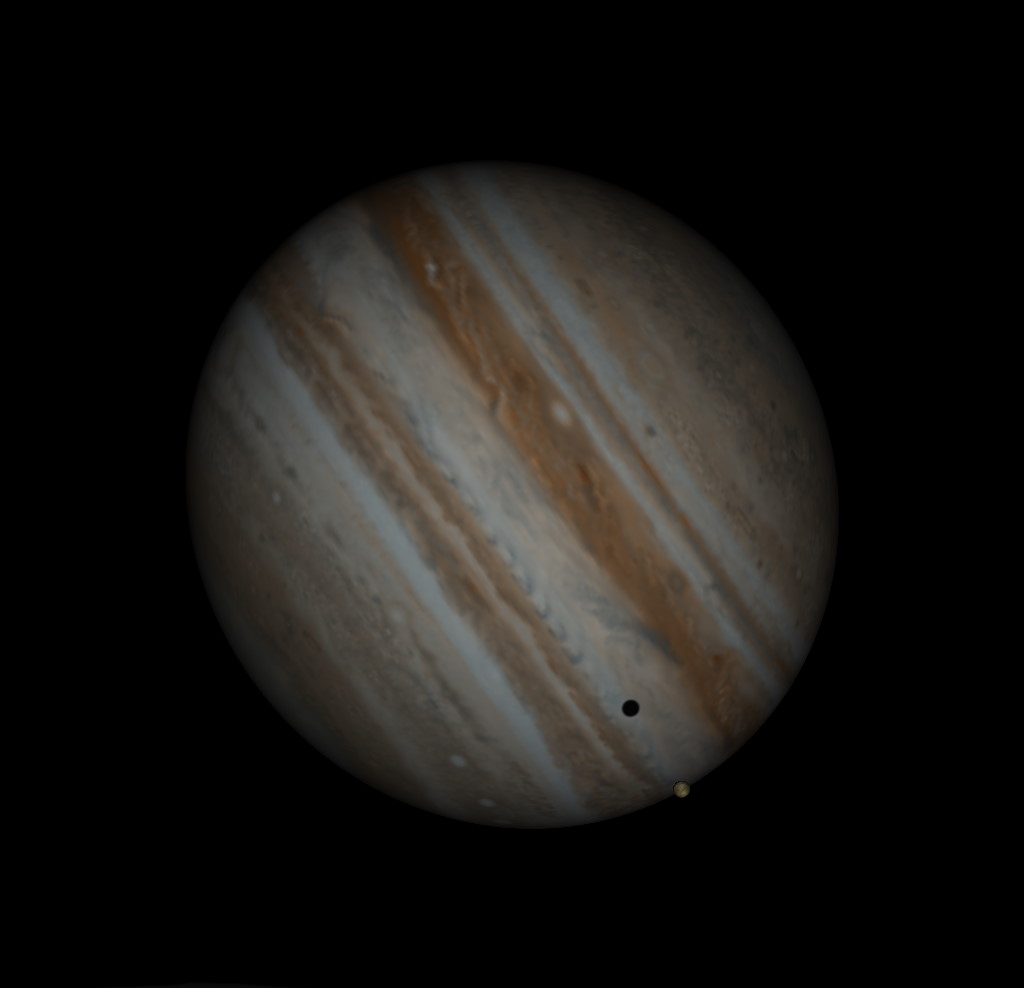
Io between third and fourth contact on September 3, 2021 3:36 AM. Credit: Bob Trembley / Stellarium. -
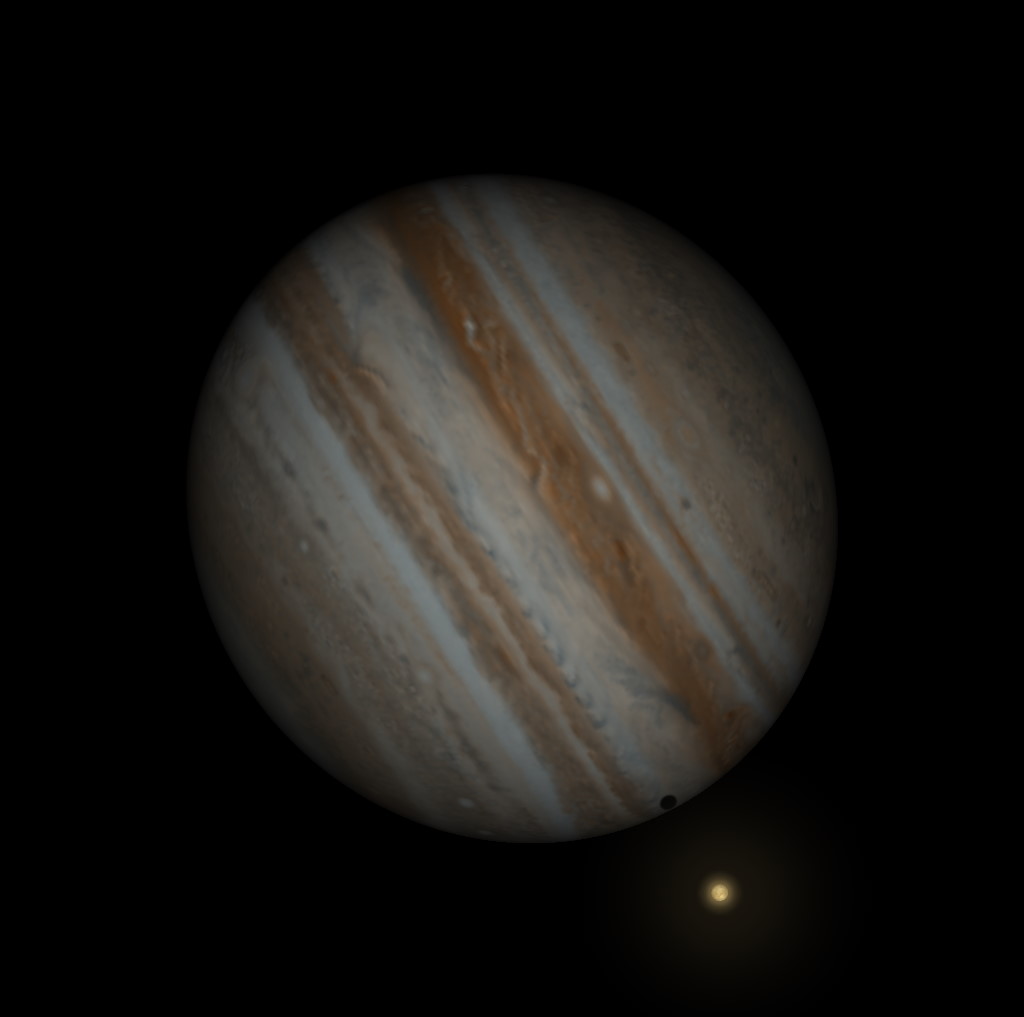
Io’s shadow at third contact on September 3, 2021 3:56 AM. Credit: Bob Trembley / Stellarium. -
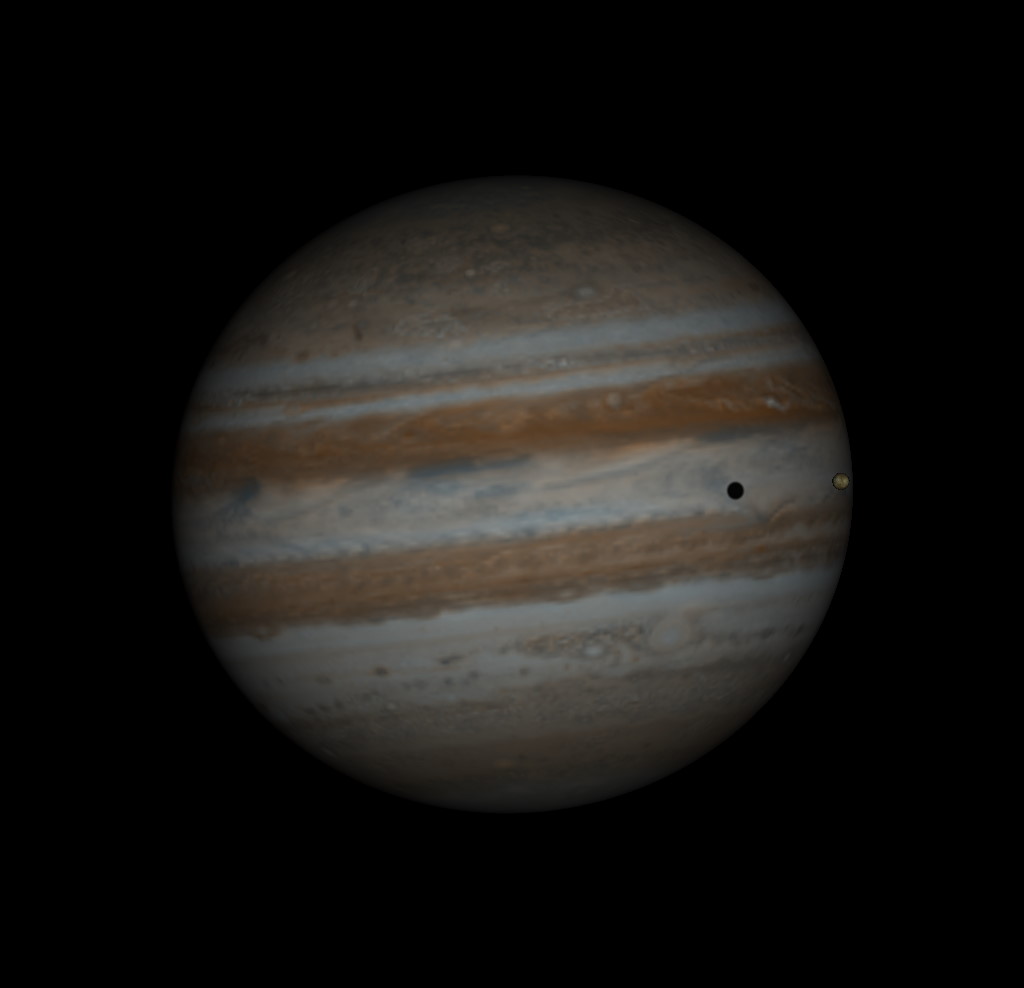
Io at third contact, and Io’s shadow on Jupiter on September 4, 2021 10:00 PM. Credit: Bob Trembley / Stellarium. -
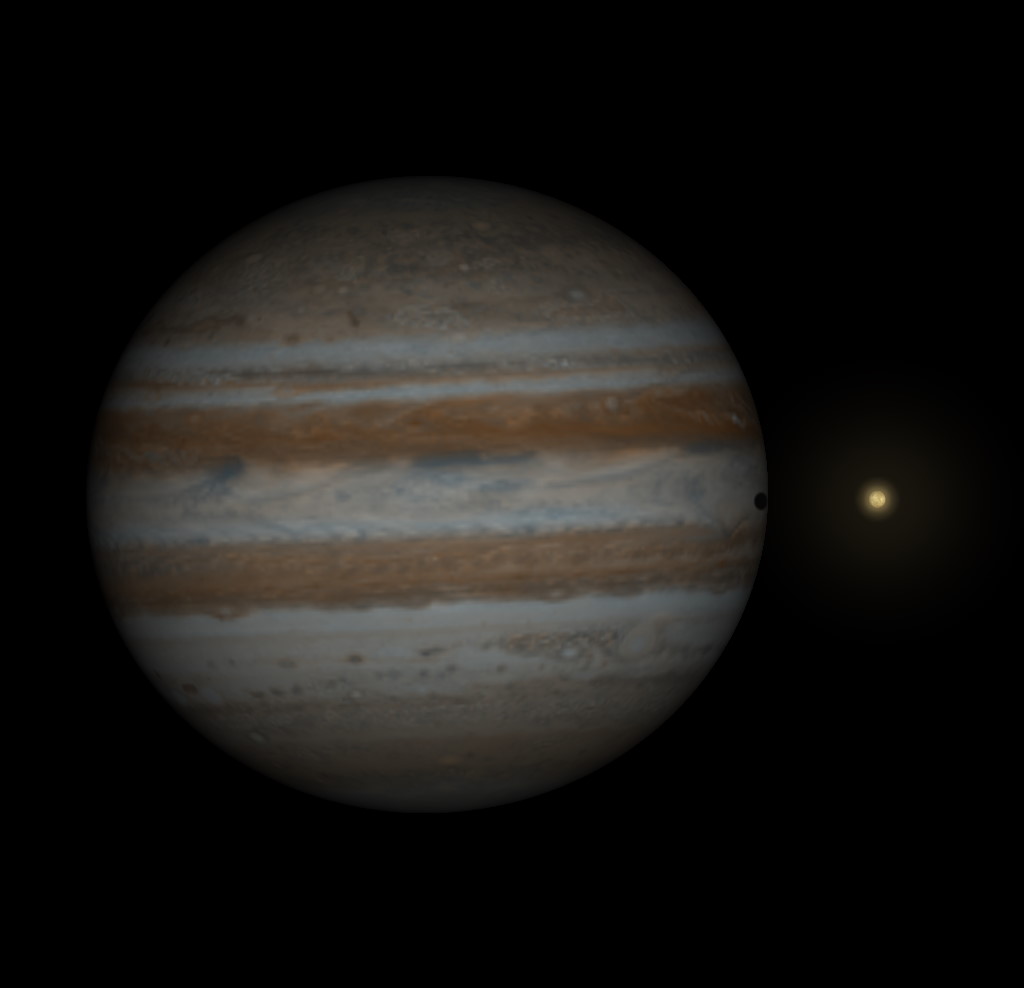
Io’s shadow at third contact on September 4, 2021 10:25 PM. Credit: Bob Trembley / Stellarium.
I wondered what these shadow transits would look like from the moons themselves, so I fired up SpaceEngine, and created these images:
-
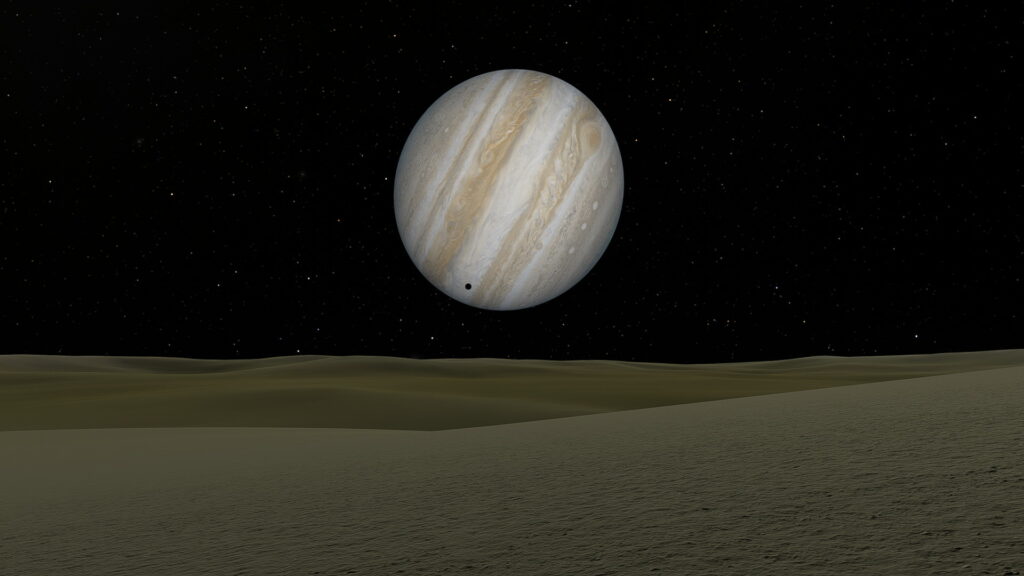
Simulation of Io’s shadow transit on September 3, 2021 seen from Io’s Surface. Credit: Bob Trembley / SpaceEngine. -
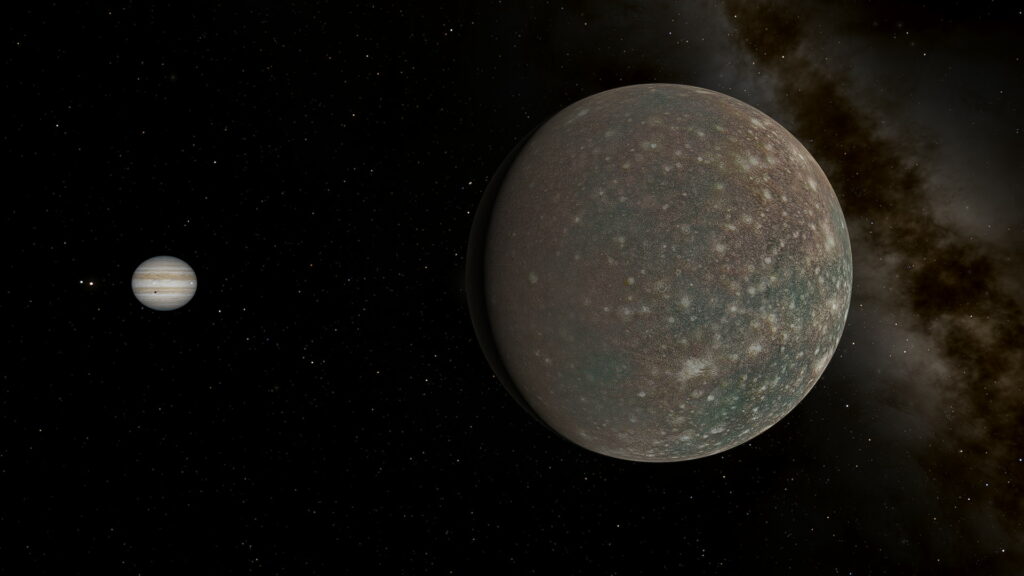
Simulation of Callisto’s shadow transit on September 1, 2021 seen from near Callisto. Credit: Bob Trembley / SpaceEngine.

See a list of current NASA missions here: https://www.jpl.nasa.gov/missions?mission_status=current

ex·o·plan·et /ˈeksōˌplanət/, noun: a planet orbiting a star other than the Sun.
Data from the NASA Exoplanet Archive
* Confirmed Planets Discovered by TESS refers to the number planets that have been published in the refereed astronomical literature.
* TESS Project Candidates refers to the total number of transit-like events that appear to be astrophysical in origin, including false positives as identified by the TESS Project.
* TESS Project Candidates Yet To Be Confirmed refers to the number of TESS Project Candidates that have not yet been dispositioned as a Confirmed Planet or False Positive.
Exoplanet News:
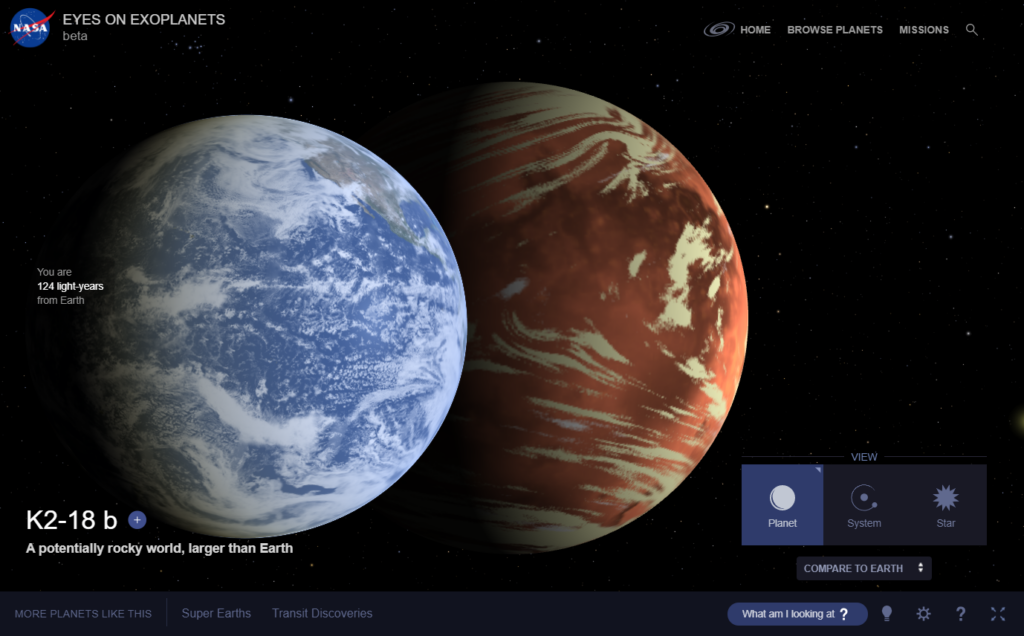

SpaceWeather.com Realtime Aurora Gallery: https://spaceweathergallery.com/aurora_gallery.html

The islands of Pellworm & Spiekeroog are now recognized as Star Islands & Intl Dark Sky Communities!
- Visit an International Dark Sky Park: https://www.darksky.org/our-work/conservation/idsp/parks/
- If you live in Michigan, visit the Michigan Dark Skies site: https://sites.lsa.umich.edu/darkskies/

Education and STEM
Hubble – Beautiful Universe: Comet 67P/Churyumov–Gerasimenko
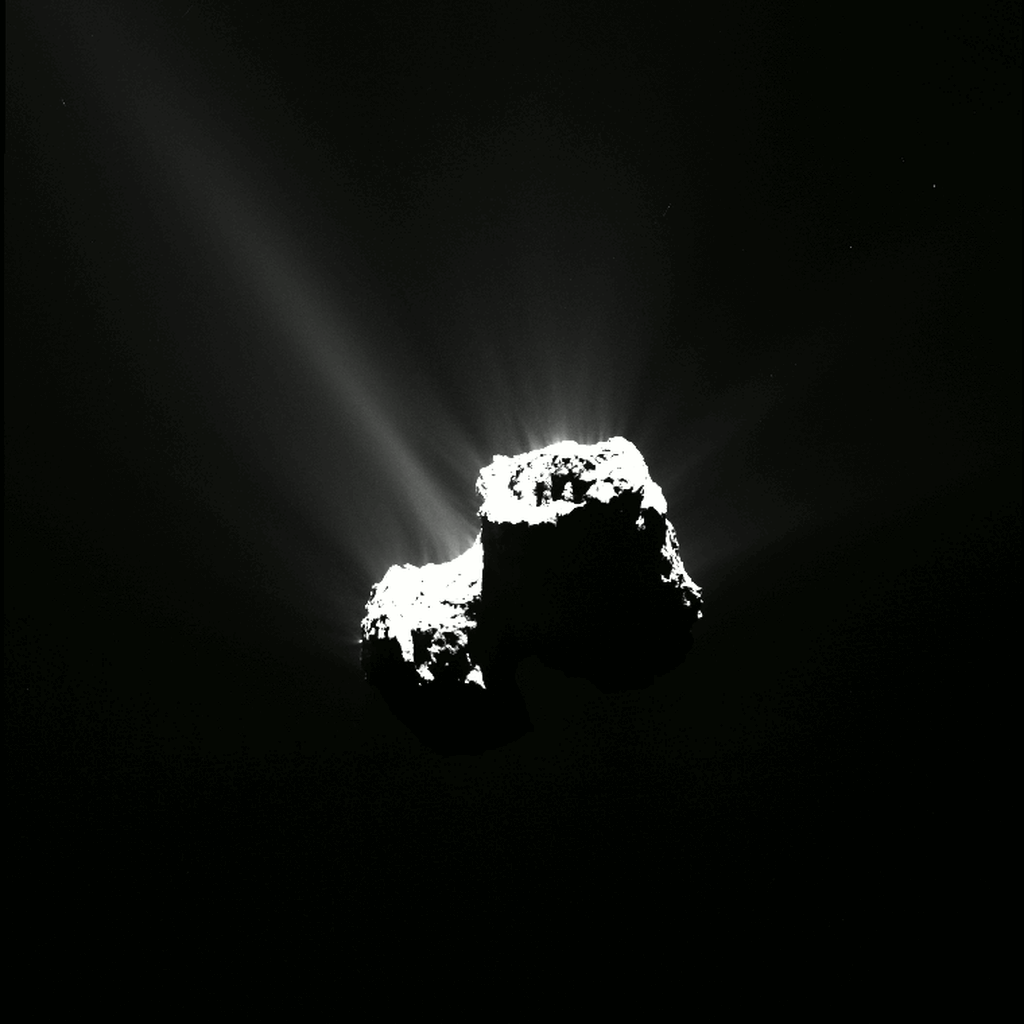
67P/Churyumov–Gerasimenko is a Jupiter-family comet, originally from the Kuiper belt, with a current orbital period of 6.45 years, a rotation period of approximately 12.4 hours and a maximum velocity of 135,000 km/h (38 km/s; 84,000 mph). Churyumov–Gerasimenko is approximately 4.3 by 4.1 km (2.7 by 2.5 mi) at its longest and widest dimensions.
It was first observed on photographic plates in 1969 by Soviet astronomers Klim Ivanovych Churyumov and Svetlana Ivanovna Gerasimenko, after whom it is named. It will come to perihelion (closest approach to the Sun) on 2 November 2021.

Churyumov–Gerasimenko was the destination of the European Space Agency‘s Rosetta mission, launched on 2 March 2004. Rosetta rendezvoused with Churyumov–Gerasimenko on 6 August 2014 and entered orbit on 10 September 2014. Rosetta‘s lander, Philae, landed on the comet’s surface on 12 November 2014, becoming the first spacecraft to land on a comet nucleus. On 30 September 2016, the Rosetta spacecraft ended its mission by landing on the comet in its Ma’at region. – Wikipedia
Software Apps used for this post:
NASA Eyes on the Solar System: an immersive 3D solar system and space mission simulator – free for the PC /MAC.
SpaceEngine: a free 3D Universe Simulator for Windows. Steam version with VR support available.
Stellarium: a free open source planetarium app for PC/MAC/Linux. It’s a great tool for planning observing sessions. A web-based version of Stellarium is also available.
